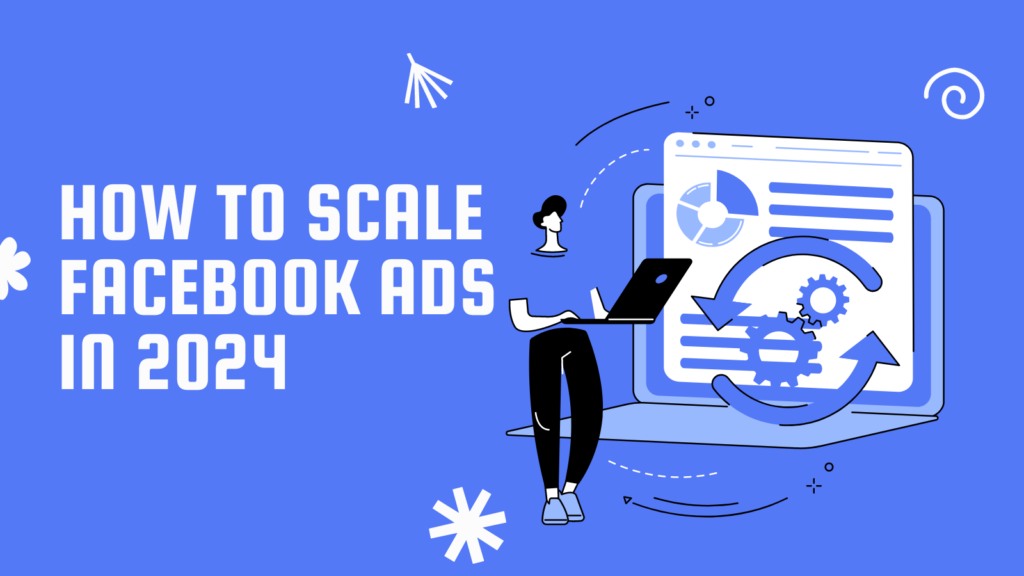
To scale Facebook ads effectively in 2024, you must navigate the evolving landscape of digital marketing. Understanding how to adapt to algorithm changes, harness the power of AI for targeting, and leverage user-generated content are key components. But what about the nuances of incorporating virtual reality into your ad strategy? How can AR filters elevate engagement levels? These questions highlight the need for a forward-thinking approach in your ad scaling efforts, pushing beyond conventional methods to stay ahead of the curve.
Key Takeaways
- Increase ad budget incrementally to gauge performance.
- Utilize lookalike audiences for targeted expansion.
- Test new ad formats and creatives for efficiency.
- Implement automated bidding strategies for scalability.
- Analyze data regularly to optimize for ROAS.
How can I identify and eliminate low-performing campaigns before scaling

To effectively identify and eliminate low-performing campaigns before scaling, begin by closely monitoring key performance metrics and segmenting your campaigns for targeted analysis.
Start by allocating your budget strategically, focusing on campaigns that show promising results.
Utilize performance tracking to keep a close eye on metrics like ROAS, CPA, and conversion rates.
Segmenting your campaigns based on product, audience, or location allows you to pinpoint underperforming areas for in-depth analysis.
Engage in thorough data analysis to identify trends and patterns within your campaigns.
Look for consistent low conversion rates, high CPAs, or poor ROAS to flag campaigns that need attention.
Optimize your campaigns by removing poorly performing products and tweaking targeting, ad copy, and bidding strategies to enhance their effectiveness.
Utilize automated rules to swiftly pause or eliminate underperforming campaigns, ensuring your budget is utilized efficiently.
What role does landing page optimization play in maintaining ROAS during scaling

Landing page optimization greatly impacts maintaining return on ad spend (ROAS) during scaling by enhancing conversion rates and user experience. Here’s how it plays an essential role:
- A/B Testing Strategies: Implementing A/B testing allows you to compare different versions of your landing page to determine which elements drive better conversion rates. By testing variations in copywriting techniques, visual design, and call-to-action placement, you can optimize your page for maximum impact.
- Conversion Tracking: Utilize conversion tracking tools to monitor how visitors interact with your landing page. By analyzing which elements lead to conversions and which cause drop-offs, you can make data-driven decisions to improve performance and maintain ROAS.
- Visual Design: Engaging visual design can capture visitors’ attention and guide them towards the desired action. By optimizing visual elements such as images, colors, and layout, you can enhance user experience and increase conversion rates, ultimately impacting ROAS positively.
How does mobile optimization impact ROAS during scaling

Mobile optimization significantly impacts the return on ad spend (ROAS) during scaling by enhancing conversion rates and user experience on portable devices. Optimizing landing pages for mobile devices is essential for improving conversion rates. Ensuring a seamless user experience, quick loading times, and clear call-to-action buttons directly contributes to higher ROAS.
Consistent messaging between ad creatives and landing pages builds trust with mobile users, increasing the likelihood of conversion. Mobile optimization allows for testing and refining targeting and creatives to find the most effective combinations. By analyzing user behavior and retention rates, marketers can predict the long-term value of users acquired through mobile advertising, guiding budget allocation efforts.
Continuous testing and refinement of landing pages, creatives, and targeting ensure that mobile campaigns remain efficient and effective while scaling. To sum up, mobile optimization plays a crucial role in maintaining and improving ROAS by focusing on conversion rates, message match, targeting, creatives, user behavior, and long-term value analysis.
Conclusion
To sum up, through data analysis, optimizing landing pages, and prioritizing mobile optimization, advertisers can effectively expand Facebook ads in 2024.
Removing underperforming campaigns, fine-tuning targeting, and consistently testing creatives are essential tactics for maximizing ROAS while scaling.
By maintaining a strategic and innovative approach, advertisers can attain substantial growth and success in their Facebook advertising campaigns.


